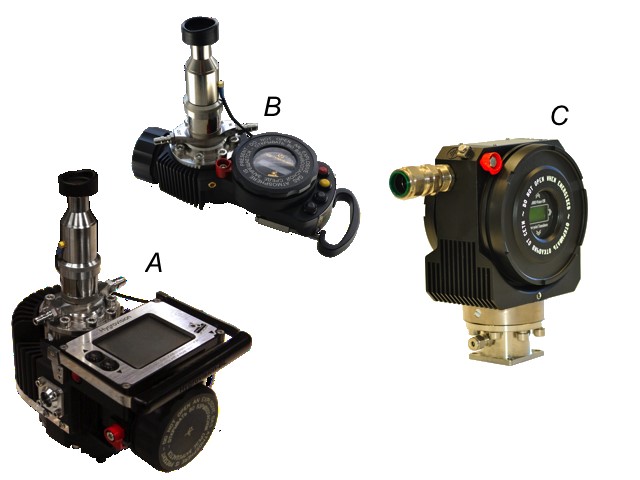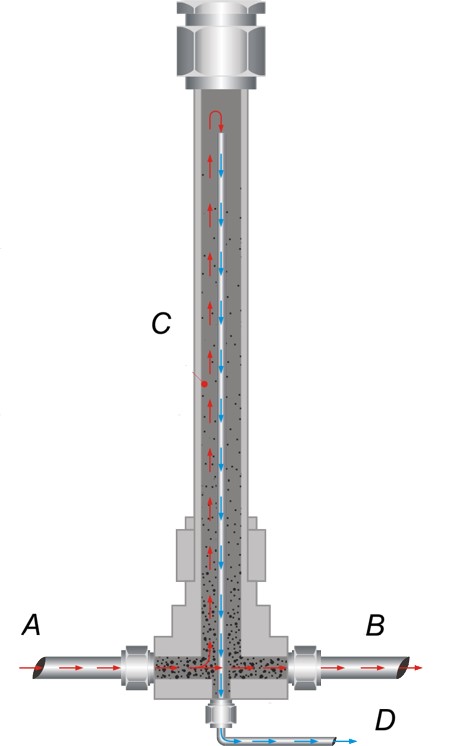Reliability and the Conundrum of Filtration
One of the most challenging aspects of process operations is the minimization of down time. Whether it involves product manufacturing, product analysis, power supply or any of a number of other processes, an interruption in regular operations can create backlogs, logistical difficulties, and unexpected expense. There may also be penalties and fines imposed for late delivery. An interruption in operations can, in fact, lead to significant interruptions in revenues. It is no surprise then, that reliability and efficiency are critical considerations when making decisions regarding new and replacement equipment.
But modern technological solutions are incredibly complex. In addition, the rate of technological change and innovation makes long-term analysis of reliability difficult to achieve. And while all reputable suppliers subject their products to testing and certification, there is often simply not enough time to research every possible failure scenario.
It is also the case that many facets of process operations involve “smart” components and it only takes a “bug” in the software of one of these components to cause a disruption in the entire operation. In the time it takes to find the “bug” and correct it, time and money may have been irretrievably lost.
Therefore, in order to offset the possibility of unexpected failures, a maintenance schedule is put into practice with the goal of spotting impending failures before they happen. Regular maintenance is the first line of defense against unexpected down time. And while regular maintenance may necessarily involve interruptions in regular operations, this type of down time is planned for and any negative impacts can be anticipated and minimized.
Unfortunately, there are situations where a regular maintenance schedule may be difficult to work out, even in cases where the technology involved is not brand new. One example of this is found in the natural gas industry.
A natural gas supplier will have installed all of the normal and necessary quality measurement technologies at various points in the supply chain. In order to function properly, these technologies require that the gas be free of contaminants. Consequently, a supplier will also have installed filtration technology. Interestingly, gas filtration technology has changed little over the years. There have been some improvements in materials and configuration, but essentially the same go-to type of filter hasn’t changed all that much for decades – some kind of membrane filtration for particulates and aerosols and charcoal filtration for heavier hydrocarbons.
One of the main limitations with these filters is that they become clogged or saturated and require cleaning or replacement. Every time a filter element requires cleaning or replacement, quality measurements are interrupted. This may or may not involve shutting down the whole process, but it does mean that for a period of time, the gas is not being controlled for quality.
In the past, this was less of an issue. It was most often the case that the gas came from a single stable source, so temporarily interrupting quality control measurements to replace a filter element was not likely to cause a problem. But the situation today has largely changed. As the global natural gas infrastructure continues to evolve and become ever more interconnected, the gas flowing through any given pipeline may have come from a range of sources, depending on availability and price. This in turn means that the gas is subject to fluctuations in quality and composition. One of the challenges inherent in the system is that these fluctuations are virtually invisible, so a sudden dip in quality is only noticeable if the analysis instruments are online.
In addition, increased use of LNG as a source for natural gas adds another complicating factor to having a clear idea of the nature of the gas in the pipeline at any given moment. Fluctuations in gas composition and quality make continuous analysis ever more critical, but these same fluctuations make filtration more of a challenge. As mentioned previously, membrane filters can become clogged and require cleaning or replacement, but because the gas supply is ever changing, anticipating when a given filter may require service becomes increasingly difficult. For the operator the dilemma arises of whether to check and change the filter more often to avoid the problems associated with clogging or stick to a maintenance schedule that is optimized for process planning and financial considerations. More frequent servicing means more frequent interruptions on some level. It also means increased costs for labor and consumables such as filter elements. So the decision is often made to simply ignore the possible negative impacts of a clogged or even semi-clogged filter as these consequences are not deemed to be grave enough to warrant minor interruptions in operations.
But a clogged or fouled filter makes quality control measurements difficult and in some cases impossible. It is not unknown that the information coming from the analysis instruments does not reflect the actual quality of the gas in the pipeline. Because of this, a downstream customer or a regulating authority may impose a penalty because the gas delivered did not meet quality specifications. And this is not the only possible consequence of not being accurately informed about the gas quality.
If the gas is much wetter than believed, condensation in the pipeline could lead to corrosion and the formation of clathrates, a sort of slushy snowball-like conglomeration of water and hydrocarbons. These clathrates can cause a number of problems including actually clogging the pipeline. It is easy to imagine the negative consequences due to a clog in an underwater pipeline!
So is there a solution to the filtration issue?
In fact there is. The Vympel company, suppliers of dew point analyzers for both water and hydrocarbons (Fig. 1), has developed an Inertia-Gravitation-Filter, or IGF, that effectively deals with all of the drawbacks of membrane-type filters. The IGF has been designed to take advantage of basic physical properties of fluid dynamics to effectively remove almost all of the dispersed phase contaminants from the sample gas being supplied to analytical equipment.

Figure 1:
Vympel dew point analyzers
A – Hygrovision BL portable (manual/automatic)
B – Hygrovision mini portable (manual)
C – CONG Prima 2M online (automatic)
A closer look at the filter reveals the elegant simplicity of the design (fig. 2). The gas enters the filter at the bottom through an inlet pipe that is arranged opposite to an outlet pipe of the same diameter. Between these two pipes the gas passes through the bottom of a long vertical tube that has a larger diameter then the inlet and outlet pipes. The gas flows into the filter at a volume rate that causes the gas to slowly fill the vertical tube, even while it flows continuously out of the outlet pipe. As the gas filling the vertical tube reaches the top it spills into the open end of an outlet channel that connects with a small pipe at the bottom of the filter that leads to downstream analysis equipment.

Figure 2:
IGF – Inertia Gravity Filter
A – Sample gas inlet pipe
B – Blow-through gas outlet pipe
C – Precipitation chamber
D – Gas for analysis outlet pipe
As the gas flows in at the bottom, the heavier particulates, carried along by their own inertia, pass through the vertical tube and exit directly through the outlet tube. Those particulates and aerosols not immediately carried away by this inertial phase of filtration are carried up with the gas as it fills the vertical tube. These contaminants are subject to the gravitational phase of filtration. The vertical tube is in fact a settling or precipitation chamber. The IGF is designed in such a way that the speed at which the gas ascends through this chamber is slower than the precipitation rate of the particulates in the gas, therefore these particulates fall out of suspension before reaching the outlet opening at the top. Subsequently, as they reach the bottom of the chamber, precipitating particulates are automatically swept out through the lower outlet pipe. Aerosol phase contaminants in the gas are also carried upward through the precipitation chamber. During this process these tiny droplets collect on the walls of the chamber and form larger drops. As these drops grow, they become heavier and ultimately flow down the walls of precipitation chamber. As with precipitating particulates, these drops are carried out of the filter through the lower outlet pipe. The gas that reaches the analyzer has never passed through a membrane, so there is no possibility that clogging could have affected its composition in any way. (Fig. 3). The gas is, however, cleaned of virtually all contaminants that could foul analysis equipment. In addition, there are significant benefits from the IGF in terms of process down time... or rather the elimination of down time. Because there is no membrane or filter element to change or clean, there is no need to interrupt the process for this maintenance. And because contaminants are swept out of the filter continuously, it is, in essence, self- cleaning. Again, this means that there is no need to interrupt the process in order to service or purge the filter.

Figure 3:
Vympel SGA 003 Gas Preparation System equipped with an IGF. This system includes the CONG Prima 2M online analyzers and shows the Hygrovision BL temporarily mounted as a reference analyzer.
With the sample gas arriving for analysis in pristine condition, analysis can render the most accurate picture of the gas quality in the pipeline. This in turn makes informed decisions about process operations possible. In addition, costs associated with filter maintenance and service are virtually eliminated.
The IGF is an elegant solution to a critical issue. In addition, unlike so many new developments, it is not subject to software issues. In an age of increased reliance on digital solutions, this analogue design offers unparalleled reliability. The IGF requires the absolute minimum amount of maintenance while providing the most effective level of sample gas filtration available.
